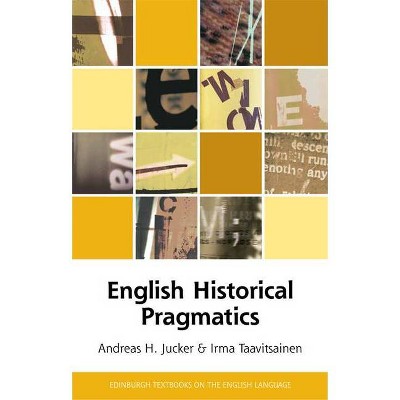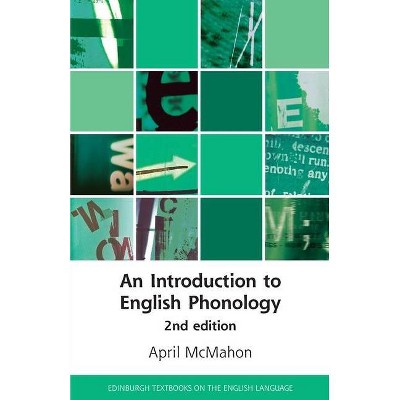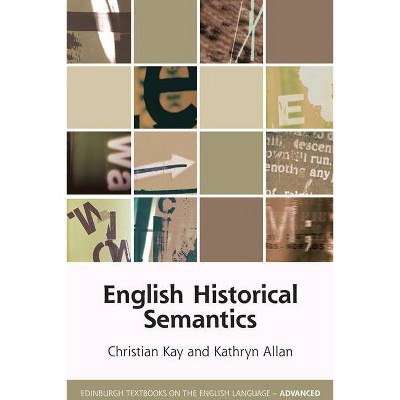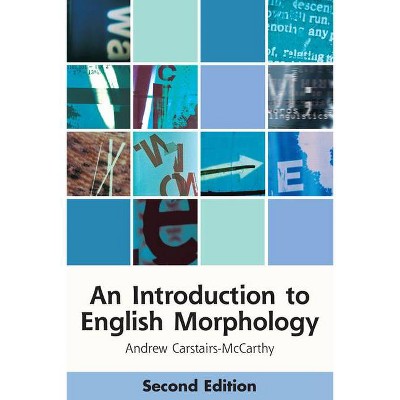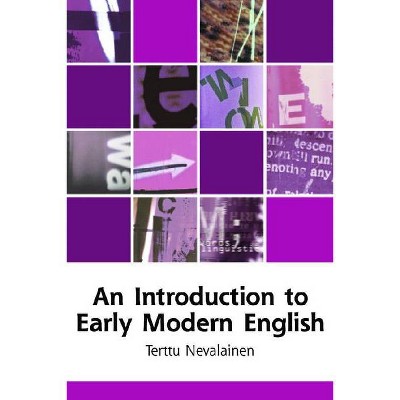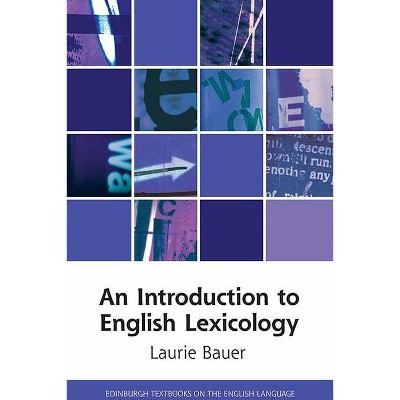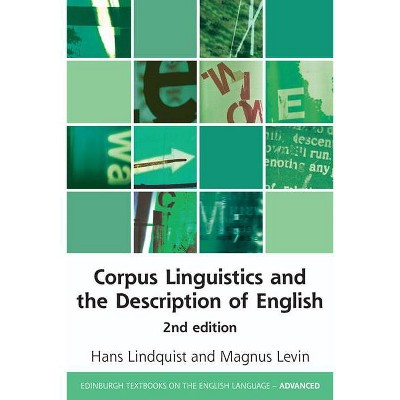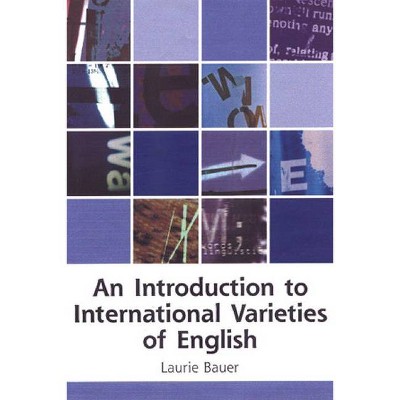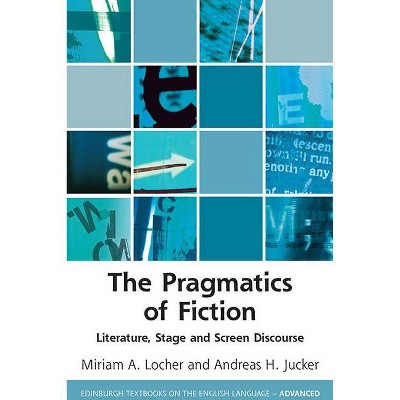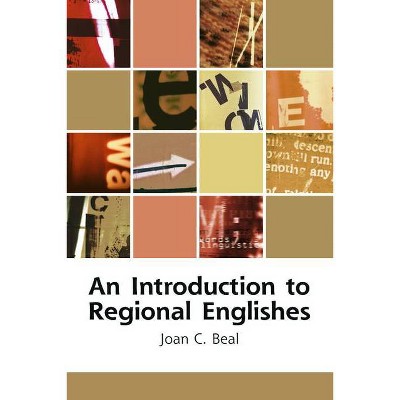An Introduction to English Semantics and Pragmatics - (Edinburgh Textbooks on the English Language) 2nd Edition by Patrick Griffiths (Paperback)
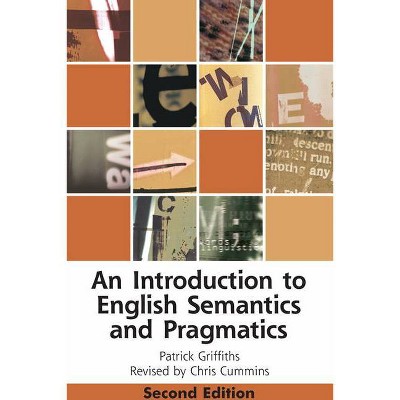
Similar Products
Products of same category from the store
AllProduct info
<p/><br></br><p><b> About the Book </b></p></br></br>An introduction to the linguistic study of meaning, this book outlines the meaning potential (semantics) of English and how language knowledge is put to use (pragmatics).<p/><br></br><p><b> Book Synopsis </b></p></br></br>An introduction to the linguistic study of meaning, this book outlines the meaning potential (semantics) of English and how language knowledge is put to use (pragmatics). As well as gaining a systematic overview of meaning in English, readers can learn how to argue for analyses. Among the significant concepts introduced are denotation, sense relations, event types, explicature, implicature, presupposition, metaphor, reference, speech acts and (at an elementary level) Generalised Quantifier Theory. Sense relations - such as antonymy and hyponymy - are presented as summarising patterns of entailment. The sense of a word is seen as the contributions it makes to the entailments carried by sentences.This textbook is compact and self-contained, offering: *Discussion of many examples *A theoretically informed approach*Accessible organisation and style*Detailed treatment of selected areas of English *Consolidation and extension through exercisesThe chapters cover adjective, noun and verb meanings, situation types, figurative language, tense, aspect, modality, quantification, topic and focus. Explanations of entailment, compositionality and scope provide a foundation for subsequent study of formal semantics<p/><br></br><p><b> From the Back Cover </b></p></br></br>'This is an excellent self-contained introduction to the study of meaning. It is highly engaging, with a sensibly paced introduction of concepts and technical terms that are central to the study of semantics and pragmatics. This new edition provides an excellent update to the material while maintaining the accessible style of the original.' Ronnie Cann, University of Edinburgh A clear and accessible introduction to the linguistic study of meaning The second edition of this bestselling textbook outlines the meaning potential (semantics) of English and how language knowledge is put to use (pragmatics). Readers will gain a systematic overview of meaning in English and will learn how to frame semantic and pragmatic analyses. The significant concepts introduced include denotation, sense relations (such as antonymy and hyponymy), explicature, implicature, presupposition, metaphor, reference, speech acts and quantification. The new edition of this textbook is compact and self-contained, offering: - Extended exercises at the end of each chapter - Expanded coverage of English pragmatics both at the sentence and discourse level - A new chapter devoted to sense relations - A wide-ranging and theoretically informed approach to meaning - Detailed treatment of selected areas of English. The first edition of An Introduction to English Semantics and Pragmatics was written by Patrick Griffiths. The second edition has been revised by Chris Cummins. Cover design: [EUP logo] edinburghuniversitypress.com ISBN [cover] 978-1-4744-1283-4 ISBN [PPC] 978-1-4744-1281-0 Barcode Cover design: [EUP logo] edinburghuniversitypress.com ISBN [cover] 978-1-4744-1283-4 ISBN [PPC] 978-1-4744-1281-0 Barcode Cover design: [EUP logo] edinburghuniversitypress.com ISBN [cover] 978-1-4744-1283-4 ISBN [PPC] 978-1-4744-1281-0 Barcode<p/><br></br><p><b> Review Quotes </b></p></br></br><br>An easy-to-read and wide-ranging overview of the major research topics in English semantics and pragmatics... An Introduction to English Semantics and Pragmatics makes a significant and novel contribution to the field for two major reasons. First, the exercises at the end of each chapter and the suggested answers at the end of the book make the book a convenient material for practice sessions and student supervisions. Second, unlike, for instance, Cruse's (2011) textbook, it contains several chapters devoted to pragmatics, which is more than welcome as there are already many textbooks on the market that are exclusively devoted to semantics... Another strength of AIESP is that it is entirely in line with the times. First, several recent references have been added to the original edition by Chris Cummins, in particular in Chapters 4 and 9 concerning adjectival meaning and metaphorical meaning. Second, it is not only based on classic theories such as speech act theory, but it also introduces more recent approaches such as Sperber & Wilson's (1995) relevance theory... Summing up, AIESP is a highly valuable book for anyone interested in the study of English semantics and pragmatics. As a thought-provoking textbook, it will be particularly useful to graduate students working on these topics.--Nicolas Ruytenbeek, Université libre de Bruxelles "The Linguist List"<br><p/><br></br><p><b> About the Author </b></p></br></br><p>Patrick Griffiths was a professor of English at Beppu University, Japan. He taught courses on semantics, the structure of English, psycholinguistics and general linguistics at a number of universities, including Beppu, the University of the South Pacific, and in the UK at York University and York St John. <p>Chris Cummins is a Chancellor's Fellow in the department of Linguistics and English Language at the University of Edinburgh.<p>
Price History
Price Archive shows prices from various stores, lets you see history and find the cheapest. There is no actual sale on the website. For all support, inquiry and suggestion messagescommunication@pricearchive.us
